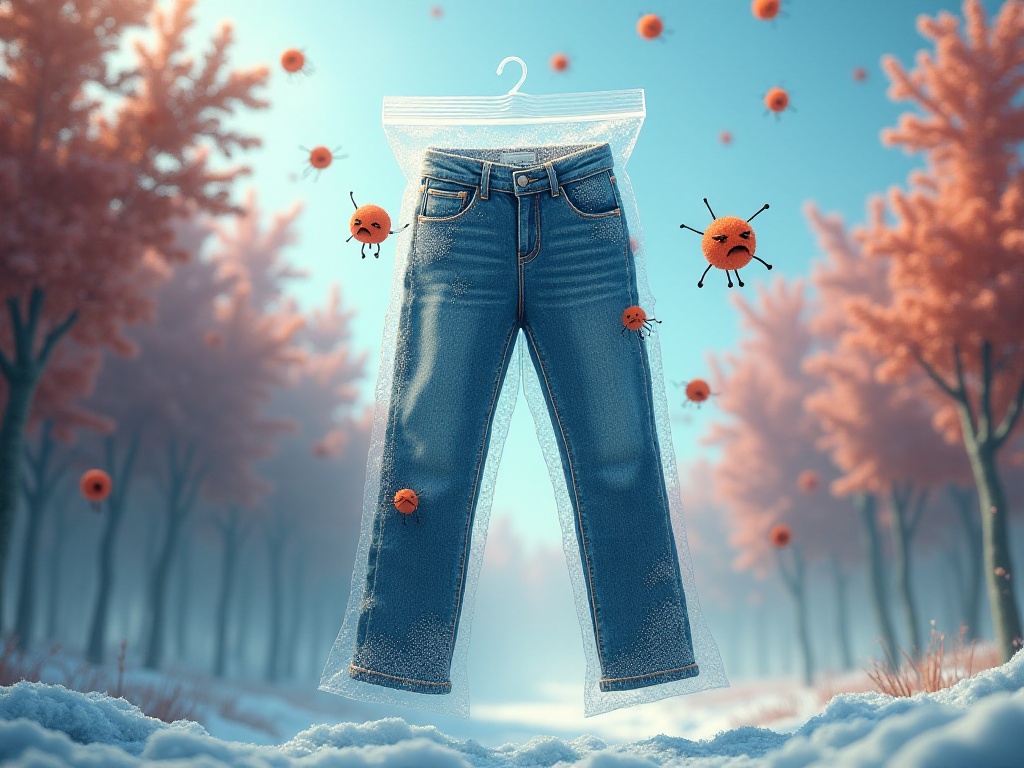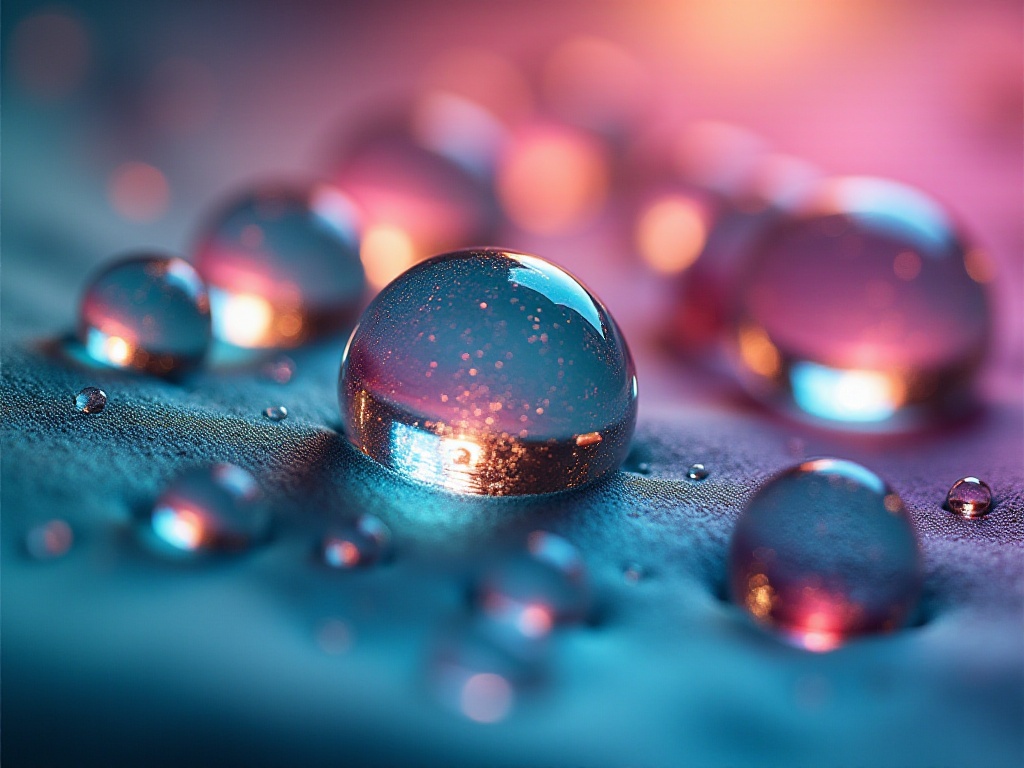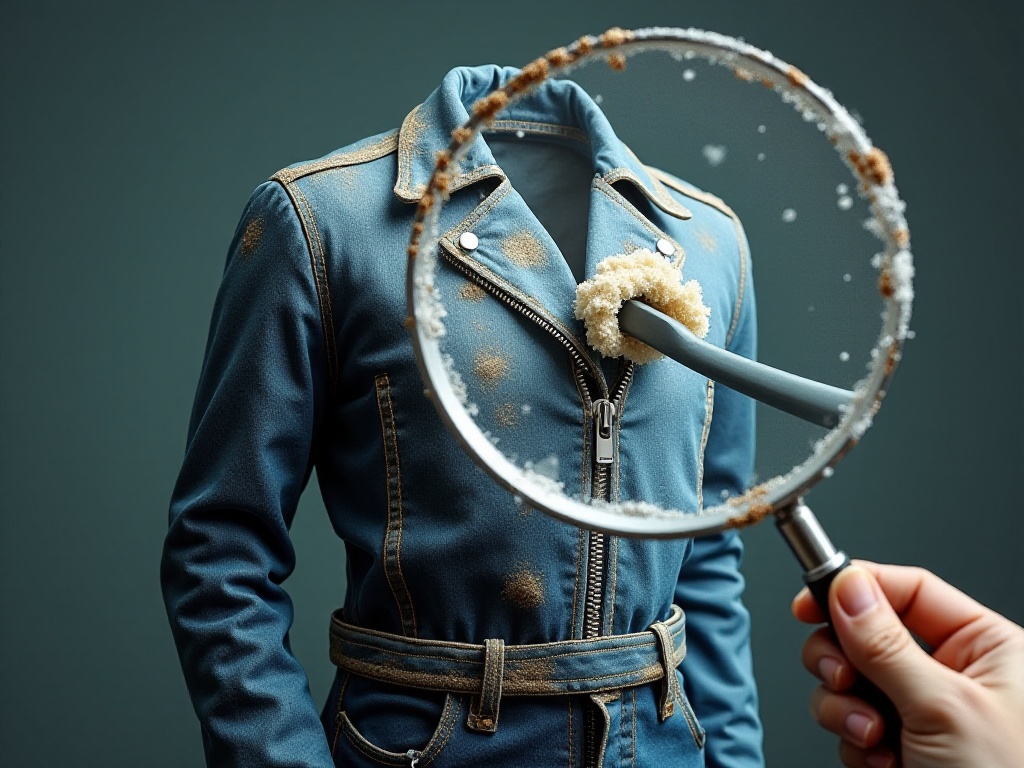Clothing care is truly an art. Good maintenance techniques not only extend the life of your clothes but also keep them in optimal condition. In this fast-paced era, we often overlook the detailed care our clothes need. Today, I'll share some practical clothing care tips that will make you exclaim: "Wow, that's amazing!"
The Magic of Vinegar

Fabric Softener Alternative
Did you know that white vinegar is an excellent substitute for fabric softener? The method is simple - just add half a cup of white vinegar during the rinse cycle, and it will soften clothes, remove odors, and even make white clothes brighter. Think about it - you won't need to buy those fabric softeners with complex chemical compositions anymore. Just use the white vinegar you have at home to make your clothes more comfortable and fresh.
For instance, you can pour white vinegar into the fabric softener dispenser of your washing machine. During the wash cycle, the vinegar will mix with water and penetrate the fabric fibers, softening clothes while removing any chemical residue or odors. After washing, you'll find your clothes become softer, feeling like new, without any chemical smell. Give it a try - the results are just as good as any commercial fabric softener.
Another benefit of white vinegar is its low cost. In supermarkets, white vinegar costs far less than branded fabric softeners, and you only need a small amount. Half a cup of vinegar per load is enough to soften clothes, making it both economical and environmentally friendly in the long run. Most importantly, vinegar is a natural substance that's gentler on skin and the environment, unlike some chemical softeners that may cause skin allergies or environmental pollution.

Removing Odors and Residue from Clothes
Another use for white vinegar is its effectiveness in removing odors and residue from clothes. Adding vinegar during washing helps break down sweat stains, food grease, and other stubborn dirt. The acidity of vinegar naturally neutralizes these stains without damaging clothes like chemical cleaners might.
For example, if your clothes still have odors after washing, or if you're worried about stubborn stains being hard to remove, just add half a cup of vinegar during the rinse cycle to greatly improve washing results. The vinegar will mix with water, penetrate the fabric fibers, dissolve odors and stains, and wash them away. Try it - you'll find your clothes are not only clean but also have a natural fresh scent.
Vinegar's deodorizing effect is particularly notable. Imagine you've just attended an outdoor event, and your clothes are filled with smoke, barbecue, or other hard-to-remove odors. Just add vinegar during washing, and these smells will be completely eliminated. The acidity of vinegar effectively neutralizes these odor molecules, restoring freshness to your clothes.
Freezing Clothes
Killing Bacteria
You might not expect it, but freezing clothes is actually a great care technique. Placing jeans in a plastic bag and freezing them overnight allows the low temperature to kill most bacteria. This method is especially suitable for those who don't want to wash their jeans frequently, as excessive washing can cause jeans to lose shape or fade.
For instance, after wearing your jeans a few times, try sealing them in a freezer bag and freezing them overnight. The next day when you take them out, most bacteria will have been killed by freezing, while your jeans maintain their original shape and color. Freezing not only kills bacteria but also reduces the need for washing, extending the life of your jeans.
When jeans are in a low-temperature environment, the fibers contract, reducing space for bacteria to survive. The freezing process acts like a natural disinfection method, requiring no chemicals. This is especially useful in summer when bacteria and sweat can easily multiply on jeans - freezing effectively controls this situation.

Maintaining Clothes Shape and Color
Let's talk about how freezing helps maintain the shape and color of clothes. Jeans tend to lose shape or fade during washing, but freezing can prevent these issues. Freezing not only kills bacteria but also helps fibers remain stable, maintaining the original shape of the clothes.
For example, if you want to keep your jeans in optimal condition, try freezing them. This not only reduces the frequency of washing but also helps maintain the original texture and color of your clothes. Low temperatures prevent fiber deformation, maintain the stiffness and elasticity of jeans, and prevent color loss.
Another benefit of freezing clothes is that it reduces the need for washing without damaging the clothes. Frequent washing not only consumes water and electricity but also accelerates wear and tear. Through freezing treatment, you can effectively reduce washing frequency and extend the life of your clothes. Give it a try - you'll find this method truly amazing.
Stain Removal Tips

Chalk for Oil Stains
If you accidentally get oil stains on your clothes, don't panic - chalk can help. Gently rub white chalk on the oil stain, letting the chalk's absorbent properties draw out the oil. After a few minutes, brush off the chalk and wash normally.
For example, if you accidentally drop oil on your shirt while eating, take some chalk and gently apply it to the oil stain. Wait a few minutes, then brush off the chalk. When you wash it, you'll find the oil stain has been greatly reduced. The chalk powder absorbs the oil, removing it from the fabric surface before it penetrates deeper into the fibers.
Using chalk is very simple - just gently rub it on the oil stain, letting the chalk powder cover the stained area. The porous structure of chalk can absorb oil, reducing its penetration into the fabric. After a few minutes, the chalk will absorb most of the oil, then gently brush off the powder and wash normally. This treatment not only removes oil stains but also protects fabric fibers from damage.

Aspirin for Yellow Stains
Besides pain relief, aspirin has another use in removing yellow stains. Dissolve 2-3 aspirin tablets in warm water, soak the yellowed clothing for 2-3 hours, then wash. The components in aspirin help break down sweat stains and deodorant residue.
For example, if your white shirt collar or underarms have yellow stains, try this method. Dissolve aspirin in warm water, soak and then wash - you'll find the yellow stains greatly reduced or even completely gone. The chemical components in aspirin break down the proteins and oils in yellow stains, making them more water-soluble.
The sodium salicylate in aspirin effectively breaks down proteins and oils in sweat, removing yellow stains. Its acidity can also neutralize alkaline residues on clothes, making them easier to clean. When using, crush or dissolve the aspirin tablets in warm water, ensuring they're fully dissolved, then soak the stained clothing. After soaking, wash normally, and you'll find the yellow stains significantly reduced.
Toothpaste for Ink Stains
Ink stains are many people's nightmare, but toothpaste can help solve this. Apply a small amount of non-gel toothpaste to the ink stain, gently rub, then wash normally. The components in toothpaste can help break down ink stains.
For example, if you accidentally drop ink on your clothes, immediately apply toothpaste, wait a few minutes, then wash - you'll find the ink stain greatly reduced. The abrasives and cleaning agents in toothpaste can absorb and break down the pigments in ink.
Using toothpaste is very simple - just apply a thin layer to the ink stain. The small particles in toothpaste can absorb and break down ink pigments. Gentle rubbing allows the toothpaste to contact the ink stain more thoroughly, then wait a few minutes to let the toothpaste work fully. Finally, wash normally, and the ink stain will be greatly reduced or possibly completely gone.
Static and Clothing Care

Dryer Sheets
Static electricity is a major issue in clothing care, but the solution is simple - just place a tissue in the dryer. The tissue can absorb static electricity from the air, preventing clothes from sticking together after washing.
For example, when washing, add a tissue and you'll find clothes no longer stick together due to static electricity, making them more comfortable to wear. The fibers in the tissue will absorb static electricity from the air, reducing static attraction between clothes.
Using dryer sheets is simple - just add a tissue during the final dryer cycle. The tissue will rotate with the clothes in the dryer, reducing surface static through friction and absorption. This treatment prevents clothes from sticking together when hanging or folding, making them more comfortable to wear.
Fabric Softening Effect
Besides removing static, tissues also have a softening effect on clothes. When rotating in the dryer, tissues create friction with clothes, increasing their softness.
Try it next time you wash - adding a tissue will not only make your clothes softer but also avoid static problems. The tissue fibers create friction with clothing fibers in the dryer, helping fibers become smoother and reducing fabric stiffness and roughness.
When tissues rotate with clothes in the dryer, they create a soft environment. This friction not only reduces static but also makes clothes softer. Try it next time you wash - add a tissue, and you'll notice a significant improvement in both the texture and comfort of your clothes.
Clothing care isn't actually complicated - once you master these tips, you can keep your clothes in optimal condition. Hope these tips help you save time and effort, making you a clothing care expert. Remember to share your experiences and thoughts in the comments section, so we can explore more clothing care secrets together. Clothing care isn't just about cleaning - it's about improving your quality of life.
Related articles




